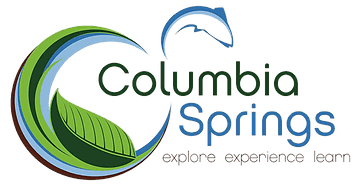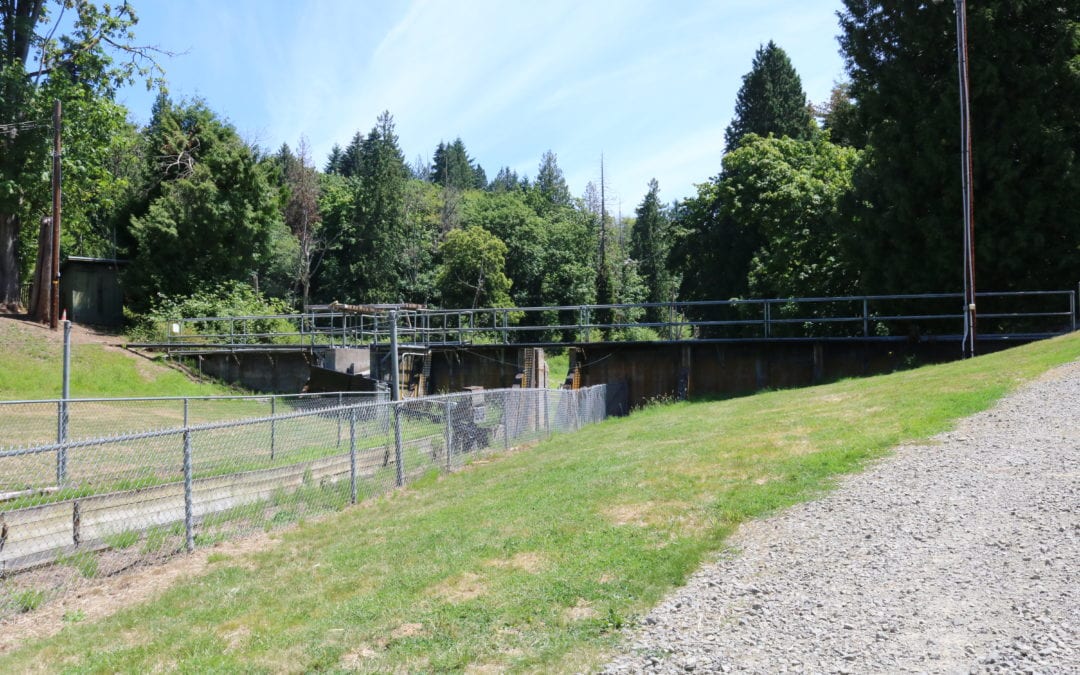We hope you enjoyed our first Campfire Conversation with Columbia Springs webinar on June 24th. We aim to host a series of presentations and conversations throughout the year to share important updates to our programs and our site with you.
Many of you already know who we are, but just in case, let’s talk a bit about Columbia Springs. We are an environmental education center located just minutes away from downtown Vancouver, WA. Our mission is to offer a unique setting and educational experiences that foster a greater awareness of the natural world and inspire stewardship.
We are a nearly 100-acre urban natural area located in Eastern Vancouver, in the Columbia Slope watershed. Our site hosts the historic Vancouver Trout Hatchery; over 2 miles of lush, forested trails; lakes and natural springs; and a diversity of wildlife.
We provide nationally acclaimed environmental education programming to every 5th grade student in the Vancouver and Evergreen Public School districts. We are also home to Repair Clark County, a program that fixes your broken items for free. Additionally, we host a Salmon in the Classroom experience to over 50 classrooms.
The topic of our first Campfire Conversation was to share some big news about our site with you. We’re going to be replacing the West Biddle Lake dam in the summer of 2022. As part of this presentation, we to talked a little bit about the rich history of the land, the status of the dam, and the questions that you all had.
How did the dam get here?
Columbia Springs occupies the ancestral, traditional and contemporary lands of Indigenous Peoples. In particular, lands taken from Chehalis, Cowlitz, Klatsop, Chinook, Klikitat and other tribes in an Executive Order that was signed on July 8th, 1864. We recognize Washington’s federally recognized Native Nations and historic Indigenous communities, Indigenous individuals and communities who live here now, and those who were forcibly removed from their homelands. In offering this land acknowledgement, we affirm Indigenous sovereignty, history and experiences.
The area that includes what is now Columbia Springs has has a long history of cultural and ecological disturbance. Prior to European settlers, Indigenous Peoples once called this area home and had a strong sense of connection and reciprocity with the land. Once European settlers entered the landscape it was forever changed.
In 1827, the Hudson’s Mill Bay Company constructed a water powered saw mill nearby what is now Columbia Springs. The lumber made at this mill was used to build Fort Vancouver, and was also exported. The decision to build a mill here was driven by an ample water supply fueled by natural springs. After Hudson’s Mill Bay Co. abandoned the mill, due to the international boundary being drawn at the 49th parellel, Lewis Love took it over and continued lumbering operations until the early 1900’s.
In 1920 Evergreen Highway was paved in concrete, dams were built on the West and East ends of the lake to create water storage, and the Biddle Hatchery was established by Spencer Biddle. Biddle raised rainbow trout which were sold to Union Pacific Railroad and to local restaurants. At this time, there was only one Biddle Lake. The lake was later split into two parts to maintain water rights below each of the dams.
On September 20th, 1937 the Washington Department of Game bought the property from Carolyn Unander for the purposes of building a hatchery. This was part of a Works Progress Administration project. The hatchery was completed in 1938.
We raise a lot of fish at Columbia Springs. Aside from rearing hundreds of thousands of rainbow trout and steelhead, we also participate in a recovery program for the Lower Columbia River’s chum program. This year we reared approximately 250,000 chum salmon fry.
Now to the main topic at hand!
As West Biddle Dam was built about 100 years ago, for the purpose of storing water for the fish rearing at the Biddle Hatchery, there are some key things to consider in the original installation. Likely, the dam was not intended to be the permanent structure that it is today. While we can’t speak to Spencer Biddle’s plans for his hatchery, it’s hard to imagine that he believed we would still be operating a hatchery on site this many years later. When this dam (and the East Biddle Dam) were installed circa 1920 the designs did not include rebar. It basically is just a concrete wall, six inches thick.
As part of our due diligence, our engineers at WSP conducted a detailed geotechnical survey. Unsurprisingly we confirmed that Columbia Springs has a lot of ground water. Their report found that the soils surrounding the dam (both under and on either side) are heavily saturated. This indicates that the dam is likely leaking water under and around. This isn’t surprising given that the dam’s bottom is resting about six feet above the assumed bedrock layer.
Why can’t we just remove the dam?
One of the questions asked at the beginning of this project was “why not just tear it down?” Typically, there are a lot of good reasons to remove dams. There has been a growing movement to remove dams where the costs – including environmental, safety, and socio-cultural impacts – outweigh the benefits – including hydropower, flood control, irrigation, or recreation – or where the dam no longer serves any useful purpose. In this case, the West Biddle Lake dam is an example where the benefits of the dam (including the $8 million annual recreational fishing industry that returns money to Washington’s economy) outweighs the options for removal.
Other things to know about our watershed
The spring water that flows at Columbia Springs and down into the Columbia River does not support natural fish bearing activities. Meaning that naturally, there are no fish using the system. This has been likely true since the last ice age ended. The water that flows from our springs has the right pH balance and year-round temperature to provide perfect conditions for rearing hatchery fish.
Project timeline
What have we done so far?
Summer/Fall 2020:
- Columbia Springs selected WSP as our engineering firm.
- Site analysis of the dam and surrounding areas was conducted, including a detailed geotechnical report.
Fall/Winter 2020-2021:
- Our engineers worked with partner organizations to analyze the data retrieved from the studies.
- Concept designs were completed and discussed.
- 30% design plans were completed based on those conversations.
Winter/Spring 2021:
- 60% design plans were completed.
Summer 2021:
- 90% design stages are underway.
- Permitting process has begun.
What’s going to happen next?
Summer/Fall 2021:
- Final Design
- Construction review with local contractors
- Permitting continues
- Procuring major components (like gates and bridges)
Fall/Winter 2021-2022:
- RFP Process for selecting contractor
- Select a contractor
Winter/Spring 2022:
- Pre-construction activities
Summer/Fall 2022:
- Construction
- Rehabilitation of site will continue into the winter months
How will this affect you?
Prior to construction, safety fences will be placed on site. At this time we will be rerouting some of the trail access for the Heron Loop. During construction, this trail will be an out and back style trail, rather than a loop. The lake will be drained, much like we do every summer.
During construction there will be periods of time where large equipment is on site. You can expect minor delays to traffic on certain days when we are moving materials to and from the site. Otherwise, the roads will be open and uninhibited. The construction area will be off limits to members of the public.
We plan on running summer camps and continuing our field trip programs during the construction period.
Have questions?
Subscribe to our email list to follow along, and track our progress here.

